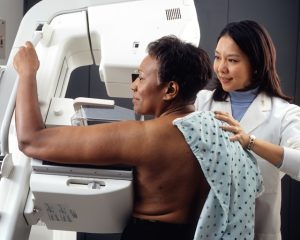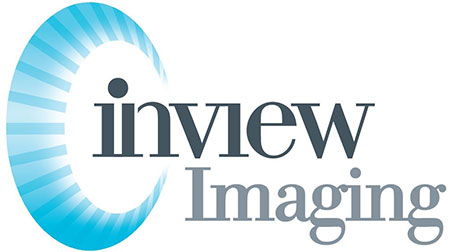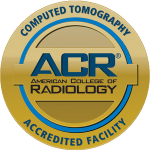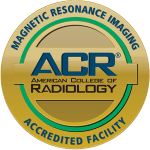-
Why Mammograms Every 2 Years: Screening Benefits & Risks
Understanding the importance of regular mammograms every 2 years is crucial for women’s health. This routine screening can detect breast cancer early, increasing treatment success rates significantly. By following this guideline, individuals can ensure timely detection and intervention, potentially saving lives. Historically, advancements in medical technology and research have underscored the significance of regular screenings in preventing the progression of breast cancer. Embracing this practice as part of a healthcare routine empowers individuals to take charge of their well-being proactively.
Key Takeaways
-
Regular mammograms every 2 years are recommended for women aged 40-49 to detect breast cancer early when treatment is most effective.
-
Understand the importance of breast cancer screening to increase the chances of early detection and successful treatment.
-
Consider the benefits of biennial mammograms for women aged 40-49, balancing early detection with the potential harms of false positives and unnecessary procedures.
-
Be aware of the risks associated with screening in women aged 40-49, such as false positives leading to anxiety and unnecessary biopsies.
-
New guidelines suggest biennial mammograms for women aged 40-49, emphasizing personalized decision-making based on individual risk factors and preferences.
-
Preventive measures like maintaining a healthy lifestyle and regular exercise can help reduce the risk of developing breast cancer.
Breast Cancer Basics
Risk Factors
Breast cancer risk factors include family history and genetic predisposition. Personal risks influence the necessity for mammograms. Understanding these factors is crucial.
Genetic predisposition plays a significant role in breast cancer development. Family history can increase the likelihood of developing this disease.
Symptoms
Recognizing symptoms like lumps or changes in breast size is vital. Differentiating between normal changes and concerning symptoms is essential. Seeking medical advice promptly for any unusual changes is critical.
Common symptoms of breast cancer include nipple discharge, skin dimpling, and breast pain. Being vigilant about changes can lead to early detection and treatment.
Prevention Steps
Lifestyle modifications play a key role in reducing breast cancer risk. Regular exercise contributes significantly to prevention efforts. Maintaining a healthy weight is crucial for overall well-being and lowering cancer risks.
-
Exercise regularly
-
Maintain a healthy weight
Screening Importance

Early Detection
Early detection plays a crucial role in improving breast cancer outcomes. When breast cancer is detected early, the chances of successful treatment and survival significantly increase. Regular mammograms are essential for detecting any abnormalities in the breast tissue. Timely detection allows for prompt medical intervention, potentially saving lives.
Regular mammograms enable healthcare providers to identify breast cancer at its earliest stages. This not only increases the likelihood of successful treatment but also provides less aggressive treatment options. By catching cancer early, patients may have more choices in their treatment plans, leading to better quality of life during and after therapy.
Survival Rates
Statistics indicate that early detection through mammograms can greatly impact survival rates among individuals with breast cancer. Women who undergo regular screenings have higher chances of detecting cancer at an early stage, which often results in better outcomes. The impact of regular screenings on improving survival rates cannot be overstated.
Survival rates in breast cancer vary based on the stage at diagnosis. For example, the five-year survival rate for localized breast cancer (cancer that has not spread beyond the breast) is significantly higher than for cancers diagnosed at a later stage. This underscores the importance of timely detection through routine mammograms in improving prognosis and overall survival.
Mammography Benefits 40-49
Detection Advantages
Mammograms play a crucial role in detecting breast cancer early, especially in women aged 40-49. They can reveal abnormalities like tumors or calcifications before any symptoms manifest. Early detection through mammograms significantly increases the chances of successful treatment.
Regular mammograms are essential for identifying breast cancer at its earliest stage, enabling prompt medical intervention. By detecting abnormalities early, healthcare providers can recommend appropriate treatments, such as surgery, chemotherapy, or radiation therapy. This proactive approach improves the overall prognosis for individuals diagnosed with breast cancer.
Impact on Mortality
Studies have shown that undergoing regular mammograms can lead to a reduction in mortality rates associated with breast cancer. Screening mammography has been linked to a decrease in deaths from breast cancer due to the early detection of tumors. The ability to detect and treat breast cancer at an early stage significantly improves survival outcomes.
The correlation between screening mammography and reduced mortality underscores the importance of routine screenings for women aged 40-49. Early detection through mammograms enables healthcare providers to initiate timely interventions, increasing the likelihood of successful treatment outcomes. Regular screenings empower individuals to take control of their health and well-being.
Screening Risks 40-49
False Positives
False positives in mammograms refer to results that incorrectly suggest the presence of breast cancer. These false alarms can lead to unnecessary stress and anxiety for individuals awaiting further tests or treatments. The implications of false positives include emotional distress, unnecessary biopsies, and additional imaging tests.
The anxiety stemming from false positives can have a significant impact on an individual’s mental well-being. Strategies to address false positives involve close monitoring of suspicious findings over time to differentiate between benign and malignant growths. Radiologists may recommend follow-up screenings or biopsies to confirm the presence of cancer.
-
Strategies for addressing false positives:
-
Regular follow-up screenings
-
Consultation with specialists for second opinions
-
Utilizing advanced imaging techniques for accurate diagnosis
-
Radiation Exposure
Concerns about radiation exposure during mammograms are valid, especially for younger individuals undergoing frequent screenings. However, the risks associated with mammography radiation are minimal compared to the benefits of early cancer detection. The amount of radiation used in modern mammography equipment is carefully regulated to minimize potential harm.
While radiation exposure is a consideration, the benefits of detecting cancer early through mammograms far outweigh the risks. Early detection increases treatment options and improves survival rates significantly. It’s essential for individuals in their 40s to prioritize regular mammograms every two years despite concerns about radiation exposure.
-
Benefits of early cancer detection:
-
Improved treatment outcomes
-
Higher chances of successful recovery
-
Reduced mortality rates
-
Varied Recommendations Explained
Age-Specific Guidelines
When considering mammograms, age-specific guidelines play a crucial role in determining screening frequency. For women in their 40s, recommendations vary among different health organizations. It’s essential to consider individual risk factors like family history and genetic predispositions when deciding on screening intervals. Women in their 40s may have different screening guidelines compared to older age groups due to varying risks and benefits.
Research Evidence
Key research findings consistently support the effectiveness of mammograms in detecting breast cancer early. Numerous studies have shown that mammography can significantly impact early cancer detection, leading to better treatment outcomes. Health organizations align on the importance of regular screenings based on compelling research evidence, emphasizing the role of mammograms in saving lives.
Yearly vs Biennial Debate
Pros of Biennial
Biennial mammograms for women in their 40s offer several advantages. The two-year interval strikes a balance between detecting potential issues and avoiding unnecessary stress. By spacing out screenings, women can reduce the chances of overdiagnosis and false positives. This approach ensures that only relevant concerns are addressed, minimizing unnecessary treatments.
-
Balances benefits and risks: Biennial screenings allow for a more comprehensive evaluation while minimizing the risks associated with frequent tests.
-
Reduces overdiagnosis and false positives: By spacing out screenings, the likelihood of unnecessary interventions due to false alarms decreases significantly.
Cons of Yearly
Yearly mammograms for women in their 40s come with drawbacks that need consideration. The annual screenings may lead to increased anxiety and stress without substantial benefits. Overdiagnosis and false positives become more prevalent with frequent tests, potentially subjecting women to unnecessary treatments. The harms of undergoing numerous screenings annually must be weighed against the benefits.
-
Risks of overdiagnosis and false positives: Annual screenings may result in identifying issues that would not have caused harm if left undetected.
-
Harms without clear benefits: Frequent mammograms can lead to unnecessary medical procedures and emotional distress without significant improvements in outcomes.
Same Benefits Biennial vs Yearly
Research Findings
Recent studies have consistently shown that mammograms every 2 years offer similar benefits to yearly screenings. Research indicates that biennial mammography can effectively detect breast cancer while reducing false positives. Advancements in technology, such as digital mammography and 3D imaging, have significantly improved the accuracy of mammograms. These technological enhancements contribute to better detection rates and lower recall rates for additional testing.
Studies have also highlighted the importance of minimizing unnecessary radiation exposure from frequent screenings. Biennial mammograms strike a balance between early detection and reducing potential harm from radiation. Ongoing research focuses on developing more precise screening methods, such as molecular breast imaging and contrast-enhanced mammography, to further enhance detection accuracy. These advancements aim to improve outcomes for women undergoing breast cancer screenings.
Expert Opinions
Leading experts in the field of oncology and radiology emphasize the effectiveness of biennial mammograms for most women. They stress the importance of considering individual risk factors when determining the optimal screening frequency. While some experts advocate for starting mammograms at age 40, others suggest beginning at age 50 for average-risk women. The varying opinions stem from differences in risk assessment models and priorities regarding early detection versus potential harms.
Expert opinions underscore the significance of personalized recommendations based on a woman’s age, family history, and overall health status. Healthcare providers play a crucial role in guiding women towards informed decisions about breast cancer screening. Consulting with a healthcare professional helps individuals navigate the complexities of screening guidelines and make choices aligned with their unique circumstances.
Following New Guidelines
How to Adapt
Adapting to mammogram screening recommendations involves understanding the shift towards biennial screenings. Stay updated on the latest guidelines from reputable sources like the American Cancer Society. Shared decision-making with healthcare providers plays a crucial role in aligning with new screening protocols.
When considering mammograms, it’s essential to recognize the benefits of following updated guidelines. By opting for biennial screenings, individuals can minimize unnecessary exposure to radiation while still ensuring timely detection of breast cancer. Consulting with healthcare providers helps tailor screening schedules based on personal health history and risk factors.
To adapt effectively, individuals should prioritize regular communication with their healthcare team. Understanding one’s individual risk factors is key in determining the most suitable screening frequency. Healthcare providers offer personalized recommendations that consider factors such as age, family history, and prior breast abnormalities.
Consult Healthcare Provider
Consulting healthcare providers is paramount in making informed decisions about mammogram frequency. These professionals possess the expertise needed to assess individual risks accurately and recommend appropriate screening intervals. Engaging in open discussions with healthcare providers fosters a collaborative approach to cancer prevention.
Healthcare providers serve as valuable resources in navigating the complexities of breast cancer screenings. By discussing personal risk factors, individuals gain insights into how often they should undergo mammograms. This personalized approach ensures that screening practices are tailored to each person’s unique health profile.
Involving healthcare providers in decision-making processes empowers individuals to make well-informed choices about their health. These experts guide patients through the nuances of mammogram recommendations, taking into account both medical evidence and individual circumstances. By consulting with healthcare professionals regularly, individuals can proactively manage their breast health.
Preventing Breast Cancer
Lifestyle Changes
Woman can reduce breast cancer risk by implementing simple lifestyle modifications. Incorporating healthy habits, such as maintaining a balanced diet and regular exercise, significantly impacts overall well-being. These changes not only promote better health but also contribute to cancer prevention.
To lower the risk of breast cancer, many women should focus on consuming a diet rich in fruits, vegetables, and whole grains. Engaging in regular physical activity helps maintain a healthy weight, reducing the chances of developing cancer. By making these adjustments, women can actively work towards minimizing their susceptibility to breast cancer.
-
Eating a balanced diet rich in fruits and vegetables
-
Engaging in regular physical activity for maintaining a healthy weight
-
Avoiding excessive alcohol consumption
Regular Check-ups
Routine health check-ups are crucial for every woman’s well-being. Through these appointments, healthcare providers can monitor overall health and detect any potential issues early on. Regular screenings, including mammograms for women, play a pivotal role in preventive healthcare by identifying abnormalities at an early stage.
Regular mammograms are essential for detecting breast cancer in its initial phases when treatment is most effective. Early detection through routine screenings improves the chances of successful treatment outcomes and reduces mortality rates among women. Therefore, scheduling regular check-ups is vital for maintaining optimal health.
-
Ensuring timely mammogram screenings based on individual risk factors
-
Collaborating with healthcare providers to create a personalized screening plan
-
Understanding the significance of early detection in combating breast cancer
Closing Thoughts
Now that you understand the importance of mammograms, especially in your 40s and beyond, you can make informed decisions about your breast health. Regular screenings every two years can detect abnormalities early, increasing the chances of successful treatment and improving outcomes. By following the updated guidelines and prioritizing preventive care, you empower yourself to take control of your well-being.
Don’t wait – schedule your mammogram today and encourage your loved ones to do the same. Your proactive approach to screening could save lives. Stay informed, stay vigilant, and remember that early detection is key in the fight against breast cancer.
Frequently Asked Questions
Why is it recommended to have mammograms every 2 years and clinical breast exam?
Regular mammograms every 2 years help detect breast cancer early, reducing mortality rates. It balances the benefits of screening while minimizing potential harms like false positives or overdiagnosis.
Are there any risks associated with mammograms for women aged 40-49?
For women in their 40s, mammograms may lead to false positives, unnecessary biopsies, and increased anxiety. However, the benefits of early cancer detection generally outweigh these risks.
What are the differences between yearly and biennial mammograms?
Yearly mammograms offer more frequent screenings but can increase false positives and overtreatment. Biennial screenings strike a balance by providing adequate surveillance while minimizing unnecessary interventions.
How do new guidelines impact mammogram frequency?
New guidelines often recommend personalized screening approaches based on individual risk factors. These guidelines aim to optimize the balance between benefits and harms of mammography for each woman’s unique situation.
Can mammograms help prevent breast cancer?
Mammograms themselves do not prevent breast cancer but are crucial for early detection. Early detection through regular screenings allows for timely treatment, increasing the chances of successful outcomes and potentially saving lives.


